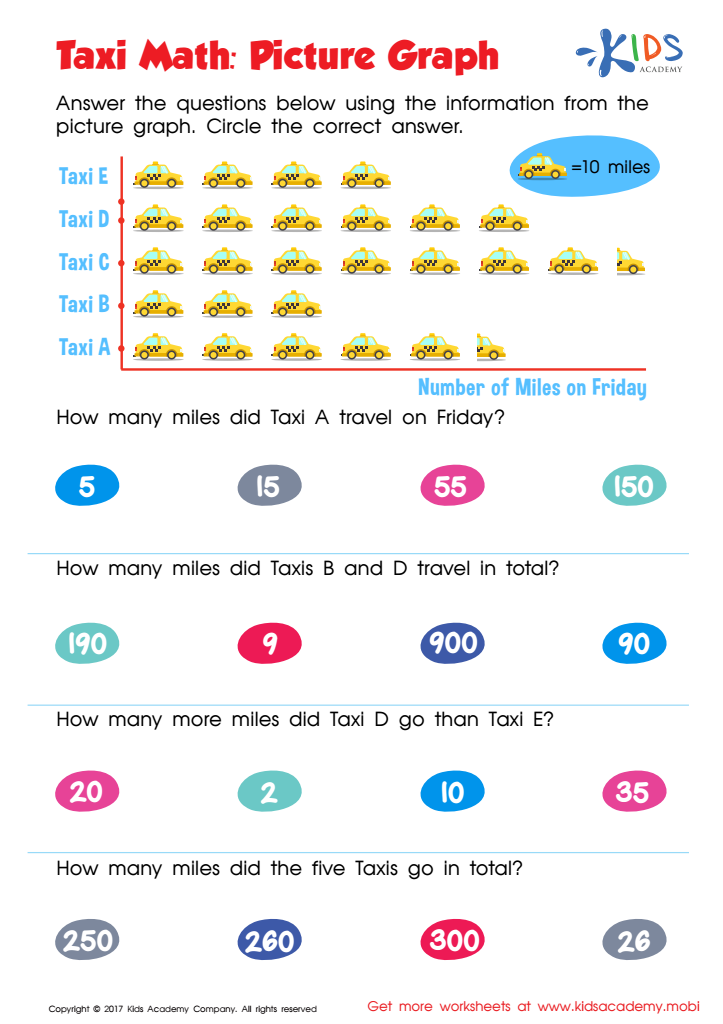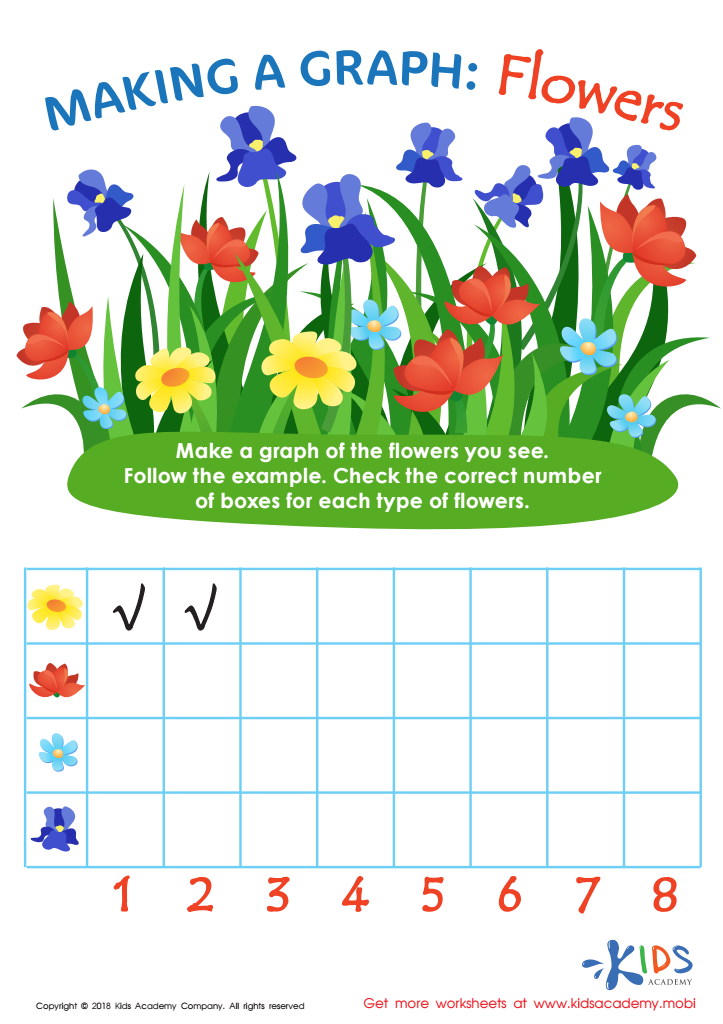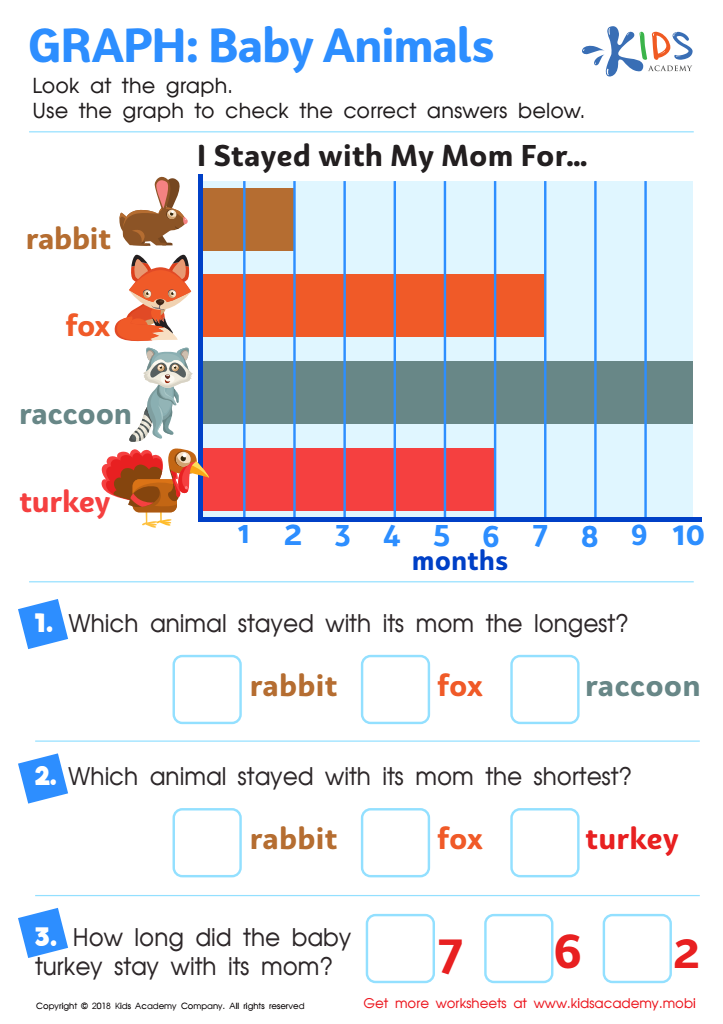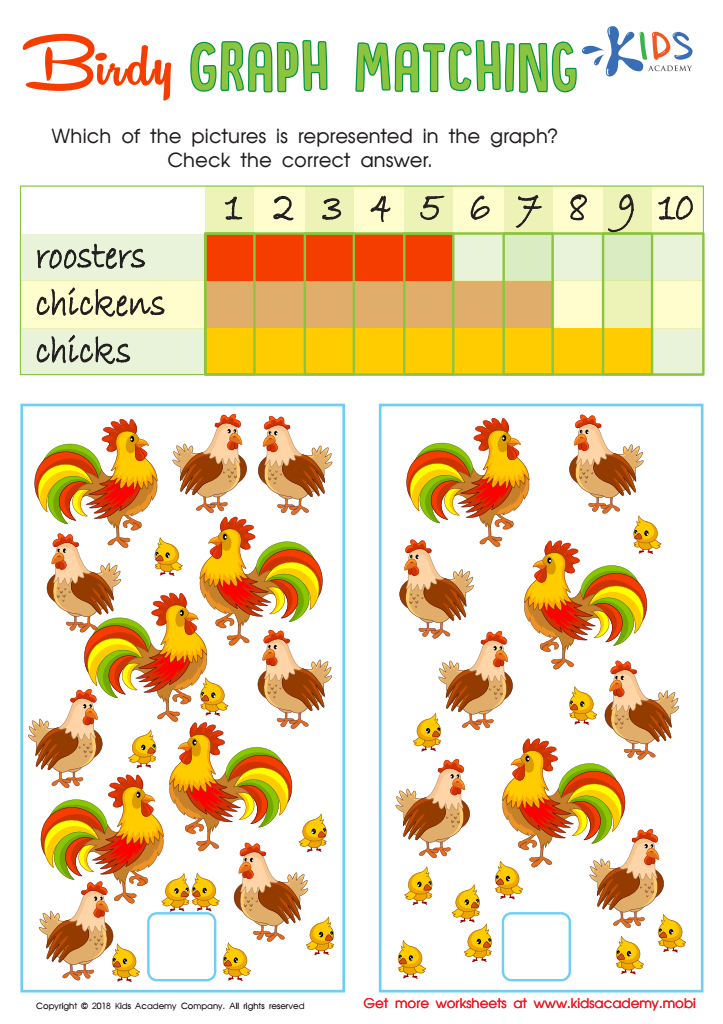Graph interpretation Math Worksheets for Ages 6-9
4 filtered results
-
From - To
Explore our engaging Graph Interpretation Math Worksheets designed specifically for children ages 6 to 9! These worksheets provide a fun and interactive way to develop essential graph reading and interpretation skills. Children will learn to analyze bar graphs, pictographs, and line plots while enhancing their critical thinking and problem-solving abilities. Our worksheets feature colorful graphics and age-appropriate questions designed to make learning enjoyable. Ideal for both classroom settings and at-home practice, these resources help young learners gain confidence in understanding data representation. Start your child’s journey to becoming a math whiz by unlocking their potential through effective graph interpretation exercises!


Taxi Math Worksheet


Making a Graph: Flowers Worksheet


Graph: Baby Animals Worksheet


Birdy Graph Matching Worksheet
Graph interpretation is a fundamental skill that plays a critical role in the early mathematical development of children ages 6 to 9. Parents and teachers should care about this aspect of math for several reasons.
Firstly, graph interpretation fosters critical thinking and analytical skills. By learning how to read and understand different types of graphs, children develop the ability to interpret data, identify trends, and draw conclusions—a skill crucial for problem-solving in everyday life.
Secondly, graphs are widely used in various contexts, from sports statistics to social media trends. Children who become proficient in interpreting graphs at a young age are likely to feel more confident when encountering data in academic settings later.
Moreover, understanding graphs helps children make connections between abstract numbers and real-world scenarios. This tangible understanding can enhance their overall enthusiasm for math and improve their engagement in the subject.
Finally, learning to interpret graphs empowers children to communicate their findings and collaborate on data-driven projects. As they explain their interpretations to peers or present data, they improve their verbal skills and gain confidence in sharing their thoughts. In summary, graph interpretation is essential for comprehensive mathematical literacy that will benefit children throughout their lives.
 Assign to My Students
Assign to My Students

















